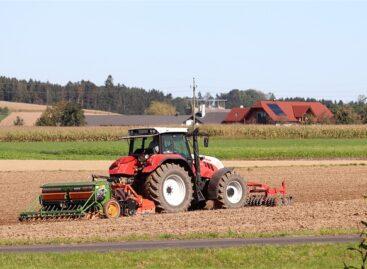ELTE research: restoration of wetlands could alleviate the drought in the Great Plains
Due to the lack of water in the atmosphere, there is not enough precipitation in the Great Plains during the drought period. To alleviate this, the researchers of the Eötvös Loránd University (ELTE) recommend the restoration of wetlands and meadows in their latest analysis.

(Photo: Pixabay)
ELTE researchers published their summary article in the scientific journal Land, in which they examined the 2022 drought in the eastern part of the country. According to their analysis, changes in the soil structure resulting from intensive agricultural cultivation are the reason why the humidity of the air layers near the surface is low during summer heat waves, so cold fronts “roll through” the Great Plains without the usual thunderstorms and precipitation. It was recalled that in 2022, during the 7-week period starting in mid-June, almost not a drop of rain fell in the Great Plain for weeks, and in the eastern part of the country, the crop loss of autumn harvest crops was almost complete. The cold fronts that still brought thunderstorms and rain to the Transdanubia “dried up” when they reached the Great Plain, they continued without precipitation and with strong winds, exacerbating the drought.
According to their analysis, the atmosphere lacked water, so a humid layer of air near the surface did not form, which would have been one of the conditions for the formation of thunderstorms
Because of this, the thunderstorms that produce the majority of the summer precipitation were missed, further aggravating the situation, i.e. excluding the outbreak of new storms for a period of several weeks. The tests showed that the water storage capacity of the landscape decreased significantly as a result of intensive agricultural cultivation following water regulations, which led to the persistence of drought. As a result of large-scale cultivation and heavy machinery, a secondary, almost water-tight layer has been created in the soil in many places, which prevents autumn-winter, early spring and early summer precipitation from being stored in the deeper layers of the soil. “However, the upper 20-30 centimeters dries out very quickly in the summer heat, and after that the chance of sufficient moisture entering the lower air layers and the formation of thunderstorms is greatly reduced. Therefore, the moisture in the higher air layers does not reach the ground,” they explained. According to the analysis of the colleagues of Gábor Timár and Balázs Székely, from the Department of Geophysics and Space Sciences, and Jakab Gusztáv, from the Department of Environmental and Landscape Geography, this is why, according to their estimate, at least in a county area – wetlands, meadows-pastures must be restored, and excess water from the winter period and snowmelt must be brought to these places from elsewhere.
The researchers believe that this can guarantee that thunderstorms can occur again in drought years, which also brings rainwater to agricultural areas. These “evaporation areas” could be created in the lowest zones of the Great Plain, from the least agriculturally valuable, lower “golden crown value” lands, where the soil is not optimal for arable cultivation anyway – it was suggested in the analysis.
Nébih
Related news
There are many old people and few women in domestic agriculture
A third of agricultural managers are already 65 years old…
Read more >Beekeeping is one of the most important branches of agriculture
Honey can be imported, but pollination cannot, which is why…
Read more >More than 60 percent of the planned sowing work has already been completed
According to operational reports assessing the state of agricultural work,…
Read more >Related news
Euro zone inflation was 2.4 percent in April as well after March
In line with analysts’ expectations, annual inflation in the euro…
Read more >Gergely Suppan: the recession is clearly over in Hungary
The recession is clearly over in Hungary, from now on…
Read more >K&H: the inflation anomaly is clearly visible, but customers perceive it differently
Although inflation has slowed down a lot, according to the…
Read more >







